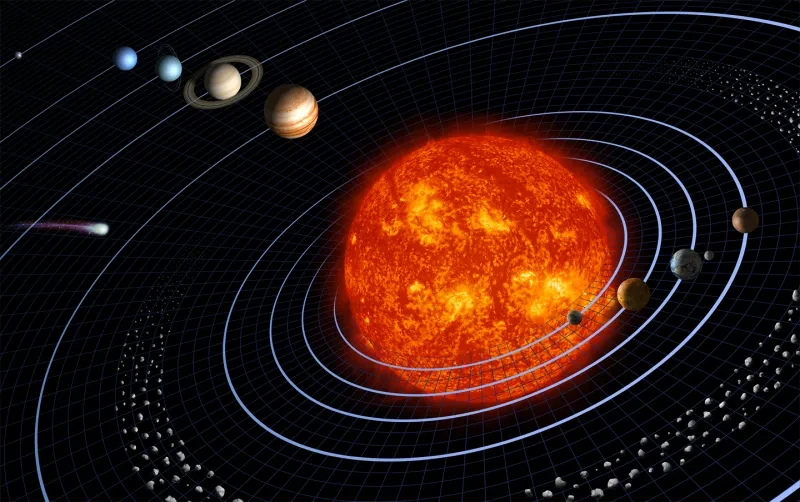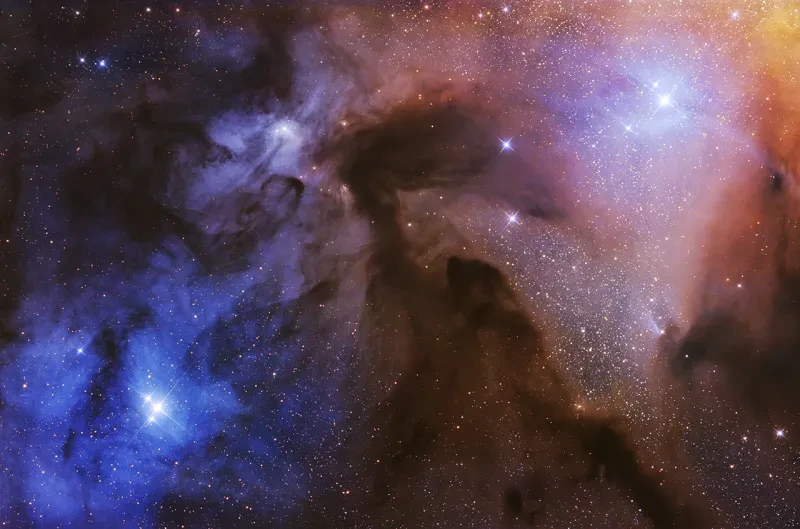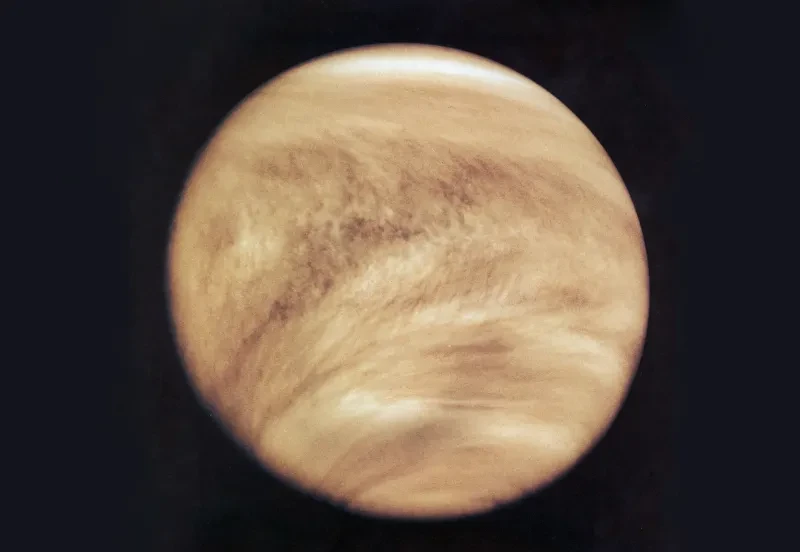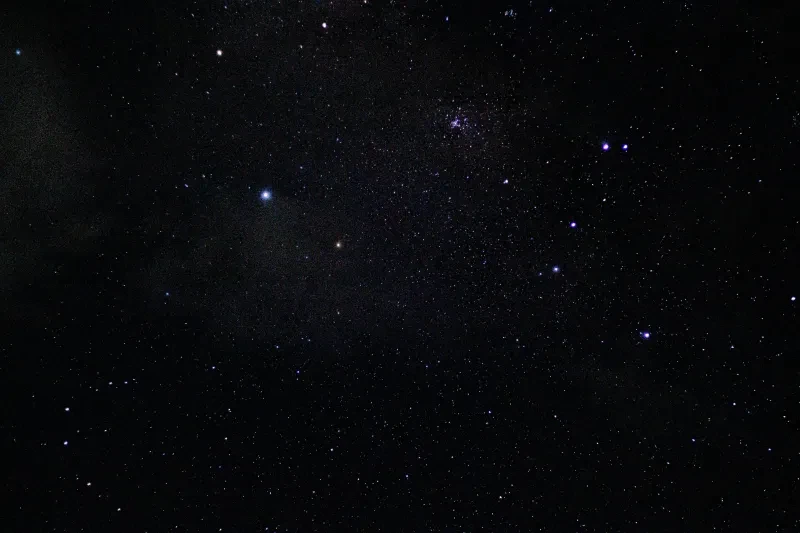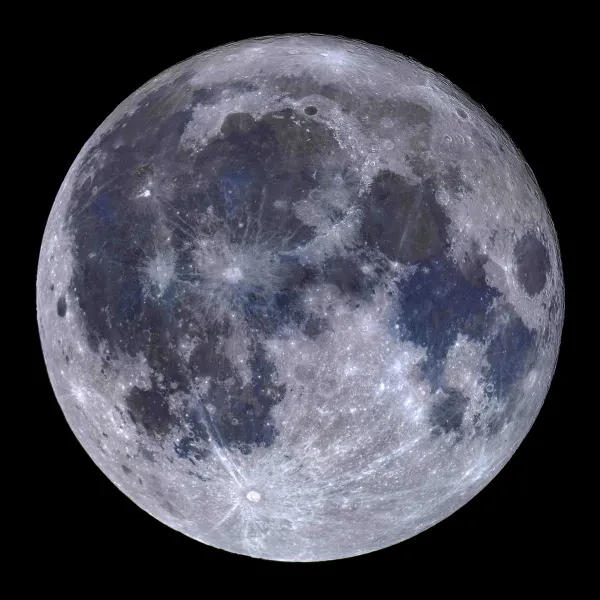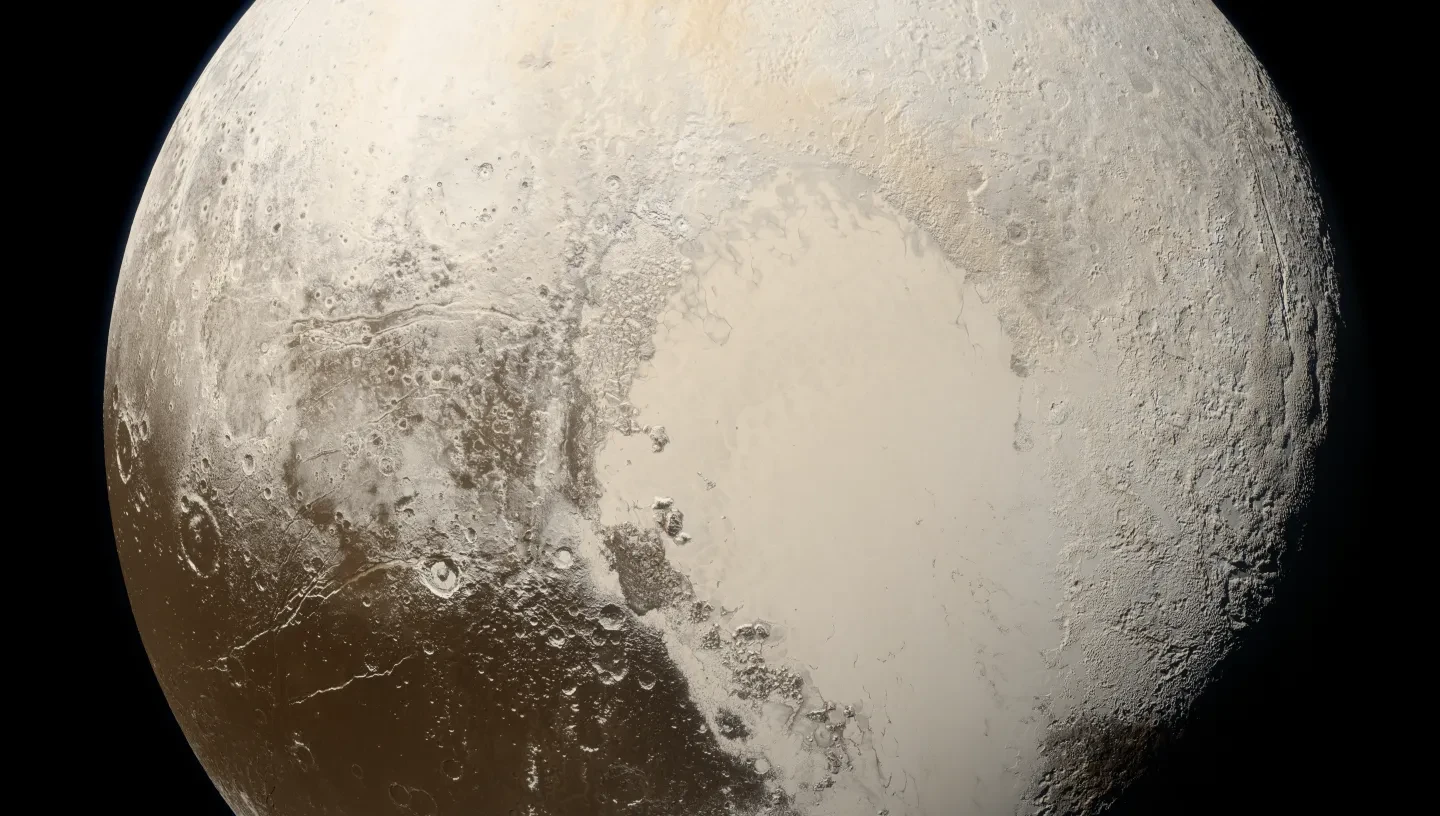
What is a dwarf planet?
In 2006 the International Astronomical Union (IAU) agreed on the official definition of a planet.
According to the definition, in order to be designated as a planet in our Solar System an object must:
- orbit the Sun
- be ‘gravitationally rounded’ - in other words, be large enough to have a rounded shape due to its own gravity
- be ‘gravitationally dominant’ – in other words, the planet needs to have cleared its orbit around the Sun of other objects of comparable size, also known as ‘clearing the neighbourhood’.
As a result of this new definition, another classification was created for objects that fall one short of these criteria: a dwarf planet.
Objects are called dwarf planets if they orbit the Sun and are gravitationally rounded, but are not gravitationally dominant.
The IAU's definition is the reason why Pluto is no longer considered a planet.
Pluto, which had been classed as a planet since its discovery in 1930, was downgraded to a dwarf planet in 2006 because it's possible for other objects to cross its orbit: it is not gravitationally dominant.
Currently there are only five dwarf planets confirmed and recognised by the IAU: Pluto, Ceres, Eris, Haumea and Makemake.
However, there are several other identified astronomical bodies that could be dwarf planets and might move into this category in the future, including outer Solar System objects Gonggong, Quaour and Sedna, which are found in a region of space called the Kuiper belt.
What’s more, according to the IAU there may be more than 100 dwarf planets waiting to be discovered.
Discover more about dwarf planets with astronomers from Royal Observatory Greenwich.
Are dwarf planets asteroids?
Asteroids are irregularly shaped lumps of rock which orbit the Sun independently (meaning that they don’t orbit a planet, which in turn orbits the Sun).
If an asteroid is massive enough to be rounded by gravity, and so be roughly spherical, it would be considered a dwarf planet rather than an asteroid.
However, there’s not a clear distinction between a dwarf planet and an asteroid. For example, Ceres is referred to as the largest asteroid in the asteroid belt between Mars and Jupiter, as well as the only dwarf planet in the asteroid belt.
Are dwarf planets smaller than Earth?
All the dwarf planets are smaller than Earth, but the definition of a dwarf planet isn’t based on size alone. The distinction between planet and dwarf planet instead depends on whether the object has its own clear orbit in the Solar System.
However, the more massive an object is, the more gravitational influence it has – and therefore it’s more likely to clear its orbit around the Sun.
This means the dwarf planets are all relatively small. Eris and Pluto are the biggest dwarf planets, but they’re both smaller than Mercury (the smallest planet in the Solar System).
Do dwarf planets have moons?
It’s possible for a dwarf planet to have a moon, but not all dwarf planets have moons. So far moons have been discovered around Makemake, Haumea, Eris and Pluto.
Where are the dwarf planets?
Four of the dwarf planets – Eris, Haumea, Makemake and Pluto – reside in the region beyond Neptune, usually referred to as the Kuiper belt. As these dwarf planets are farther out in the Solar System than Neptune they are also called ‘plutoids’, a subcategory of dwarf planets.
Around 3,500 small bodies, called Trans-Neptunian Objects (TNOs), have been found in this area but until Eris all the TNOs discovered were significantly smaller than Pluto. Many of these TNOs are possible candidates for dwarf planet status.
Ceres is unlike the other dwarf planets, as it's located in the asteroid belt in the inner Solar System, between the orbits of Mars and Jupiter.
What’s the difference between a dwarf planet and a minor planet?
A minor planet is defined as any small object in the Solar System which independently orbits the Sun but is neither a planet nor a comet.
A dwarf planet meanwhile is an object which orbits the Sun independently and is massive enough to be gravitationally rounded, but is not gravitationally dominant.
However, definitions can blur when it comes to classifying objects, and objects don't always fall neatly into one category or another.
The Universe is waiting
Sign up to the space newsletter from Royal Observatory Greenwich for astronomy news, courses and special events.
Introducing the dwarf planets

Eris
The ‘new kid on the block’, Eris was first discovered in 2005 from photos taken in 2003.
Eris seems to be similar to Pluto in composition, with deposits of methane ice on the surface. However, Eris is around 2,400 km in diameter, making it larger than Pluto.
With such a large size, the team who discovered Eris were pushing for the object to be classed as a 10th planet. Other astronomers took a different view and argued that Pluto should instead be downgraded.
Eris initially went by the not-so-catchy name 2003 UB313, before being renamed after the Greek goddess of discord in 2006. Given that it was Eris's discovery that eventually resulted in Pluto being reclassified a dwarf planet, the name 'discord' seemed appropriate!
Eris has one known moon called Dysnomia, named after the daughter of the goddess Eris.
The dwarf planet is almost three times farther away from Earth than Pluto, and as a result takes 559 Earth years to orbit the Sun once.
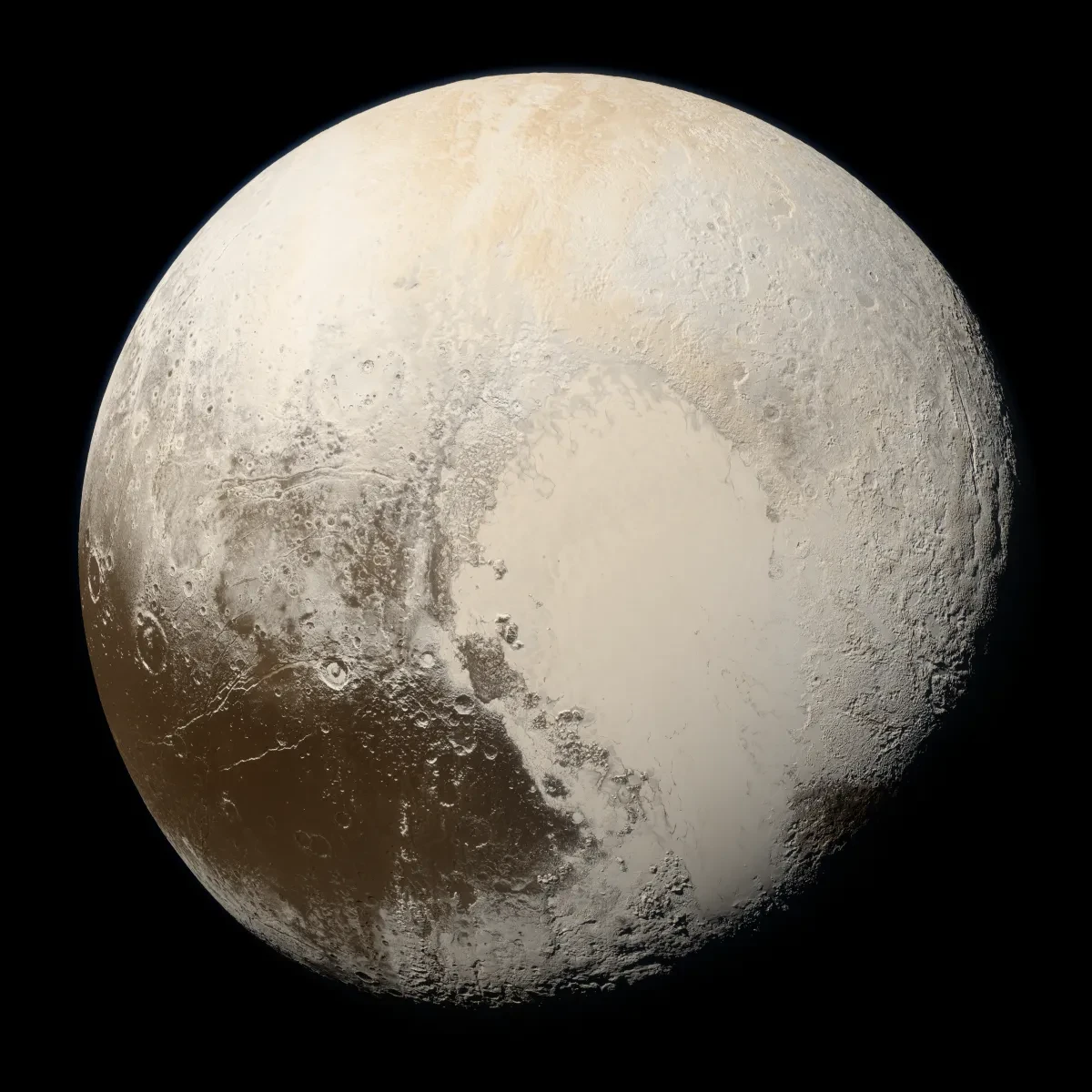
Pluto
Pluto’s discovery
Pluto was discovered in 1930 by Clyde Tombaugh at the Lowell Observatory in Arizona.
At the time, astronomers were comparing the predicted positions of Uranus and Neptune in the sky against the positions in which they were actually observed.
Small differences from the predicted positions indicated that the paths of these two planets were being disturbed by the gravitational pull of another body – Pluto.
Pluto’s exact location was determined using a machine called a ‘blink comparator’.
In this method, photos of the night sky are taken at different times and then compared by rapidly flicking from one to the other. By spotting tiny differences in the images it’s possible to see objects that have moved.
We know stars don’t change their positions on such small timescales, so moving objects must be something else – like dwarf planets.
Pluto facts
Pluto is about 2,380km across and takes 248 Earth years to orbit the Sun once, while a day on Pluto is 153 Earth hours long. At an average of almost 6 billion km from the Sun, the surface temperature is about -230°C.
This means that nitrogen, methane and carbon monoxide – all gases here on Earth – become solids on the surface of Pluto.
One of its most famous features, a giant heart-shaped glacier called Sputnik Planitia, is made of solid nitrogen. Pluto’s thin atmosphere is also mainly made of nitrogen.
It’s thought that in the past Pluto may have had liquid on the surface, and it still might have an ocean underneath the surface.
Pluto’s name comes from the Roman god of the underworld, and was originally suggested by an 11-year-old girl. Pluto's five discovered moons – Charon, Nix, Hydra, Styx, and Kerberos – also get their names from characters associated with the underworld in both Greek and Roman mythology.
Pluto's moon Charon is around half the diameter of Pluto and one eighth of its mass, making this the closest parent-to-moon ratio of a planet or dwarf planet in the Solar System. Because of this, Charon pulls on Pluto and makes Pluto do a small orbit around their combined centre of gravity. Many consider them to be a binary system in which two objects orbit one another.
Exploring Pluto: the New Horizons spacecraft
The New Horizons mission to Pluto launched on 19 January 2006 and flew past Pluto in July 2015, investigating and collecting data on the dwarf planet and its moons.
This was the first spacecraft to visit Pluto and the first time astronomers had been able to image the surface of Pluto in any detail, as it’s so far away it looks like a small dot from Earth-based telescopes.
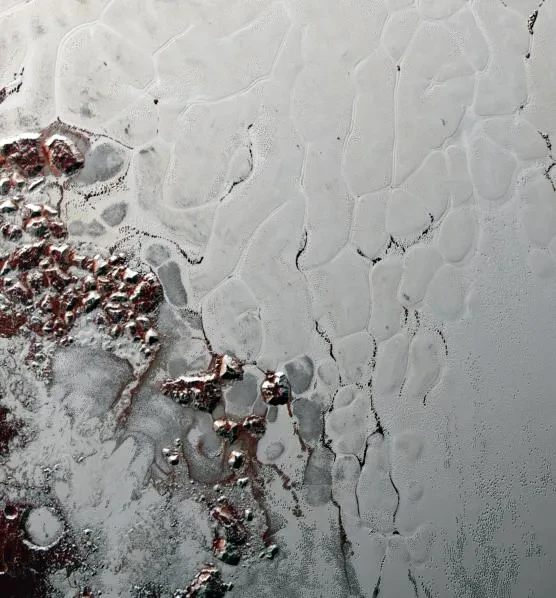
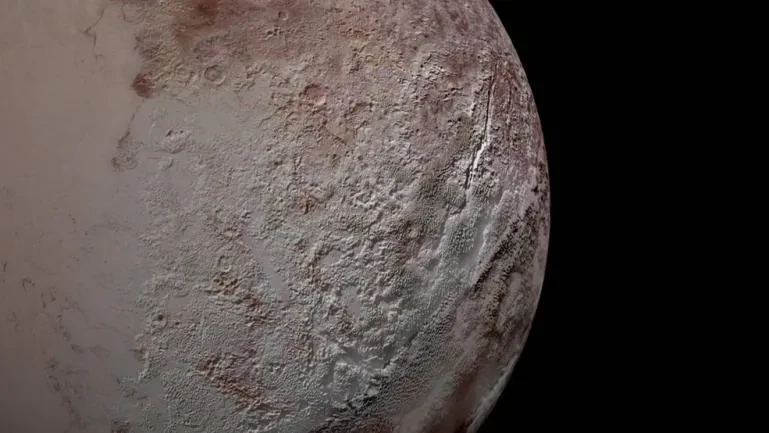
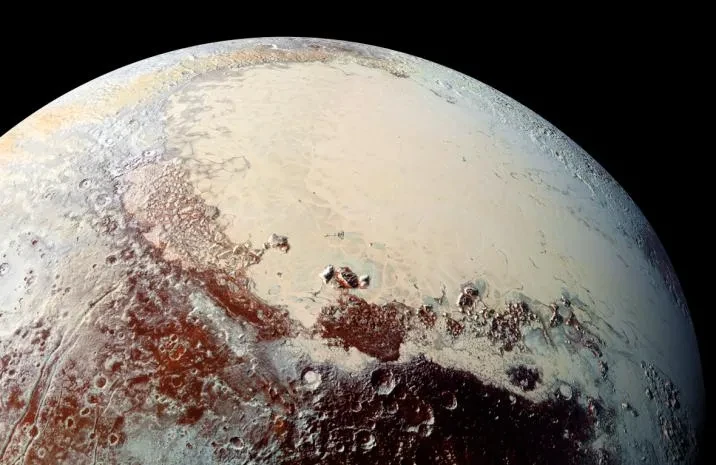
The entire data set was about 6.25 gigabytes, but it took 15 months to transfer it all back to Earth due to the huge distances involved and the slow data rate possible. For comparison, this is equivalent to a speed about 26,000 times slower than what is considered a ‘good’ internet connection today on Earth.
On board the New Horizons mission were some of the ashes of Clyde Tombaugh (1906-1997), meaning the astronomer who discovered Pluto went to the dwarf planet almost 85 years later!
Take a look back at the New Horizons mission with Royal Observatory astronomer Patricia Skelton. To watch more free astronomy talks and explainers, subscribe to the Royal Observatory on YouTube.
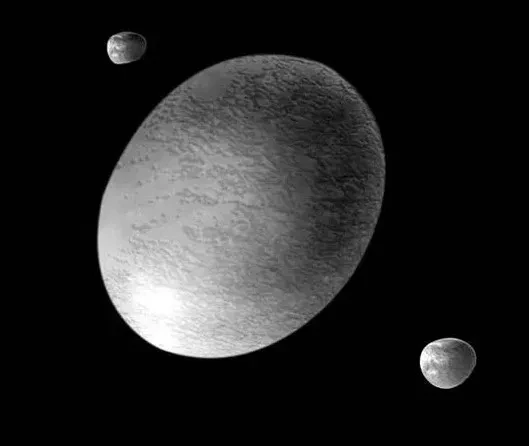
Haumea
Haumea, named after the Hawaiian god of fertility, was discovered in 2003 and is also in the outer Solar System.
It is shaped like an egg or an American football, and it’s thought that the incredibly fast spin of the dwarf planet (one day lasts just four hours) has distorted its shape.
Haumea has two moons, Namaka and Hi'iaka, named after the mythological daughters of Haumea.
Despite having a short day it still has a long year, 285 Earth years for one full orbit of the Sun. At an average of four billion miles from the Sun, it takes sunlight six hours to reach Haumea.
Haumea has a diameter of 1,740 km, and was the first ever Kuiper Belt object to have been found to have rings.
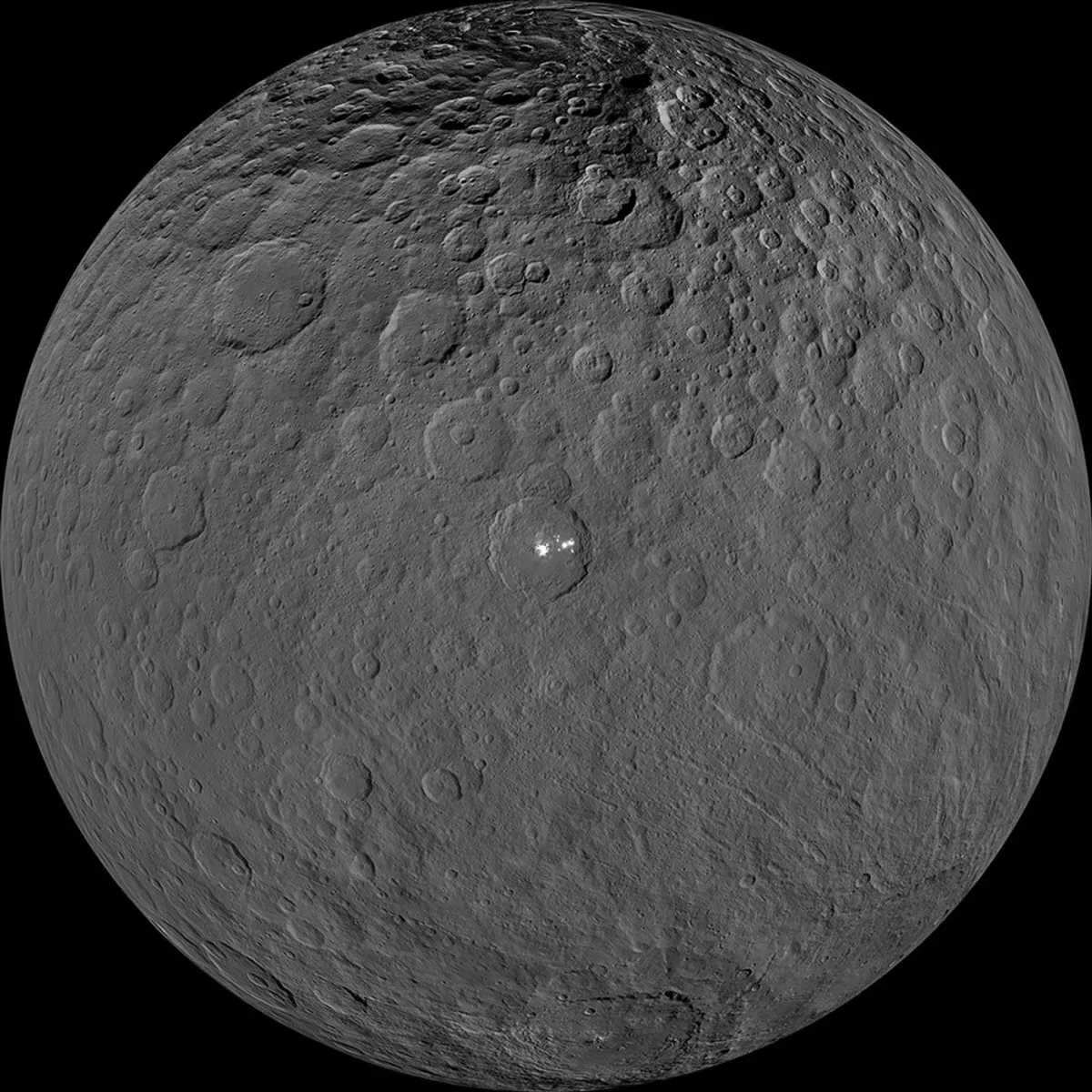
Ceres
The first object in the asteroid belt to be discovered, Ceres was first seen by Giuseppe Piazzi from Sicily in 1801, 129 years before Pluto was discovered.
Ceres was called a planet, then a minor planet, then a large asteroid until 2006, when it was upgraded to dwarf planet status by the International Astronomical Union at the same time Pluto was downgraded.
Ceres is around 946 km in diameter, making it roughly 1400 kilometres smaller in diameter than Pluto.
Ceres takes 4.6 Earth years to orbit the Sun, while a day is nine Earth hours long.
It's named after the Roman goddess of harvest and agriculture, which is also where we get the word cereal.
NASA’s spacecraft Dawn began its orbit of Ceres on 6 March 2015 and was the first ever spacecraft to orbit a dwarf planet. The mission lasted until 1 November 2018. Pictures revealed puzzling bright spots which could be salt deposits or frozen water.
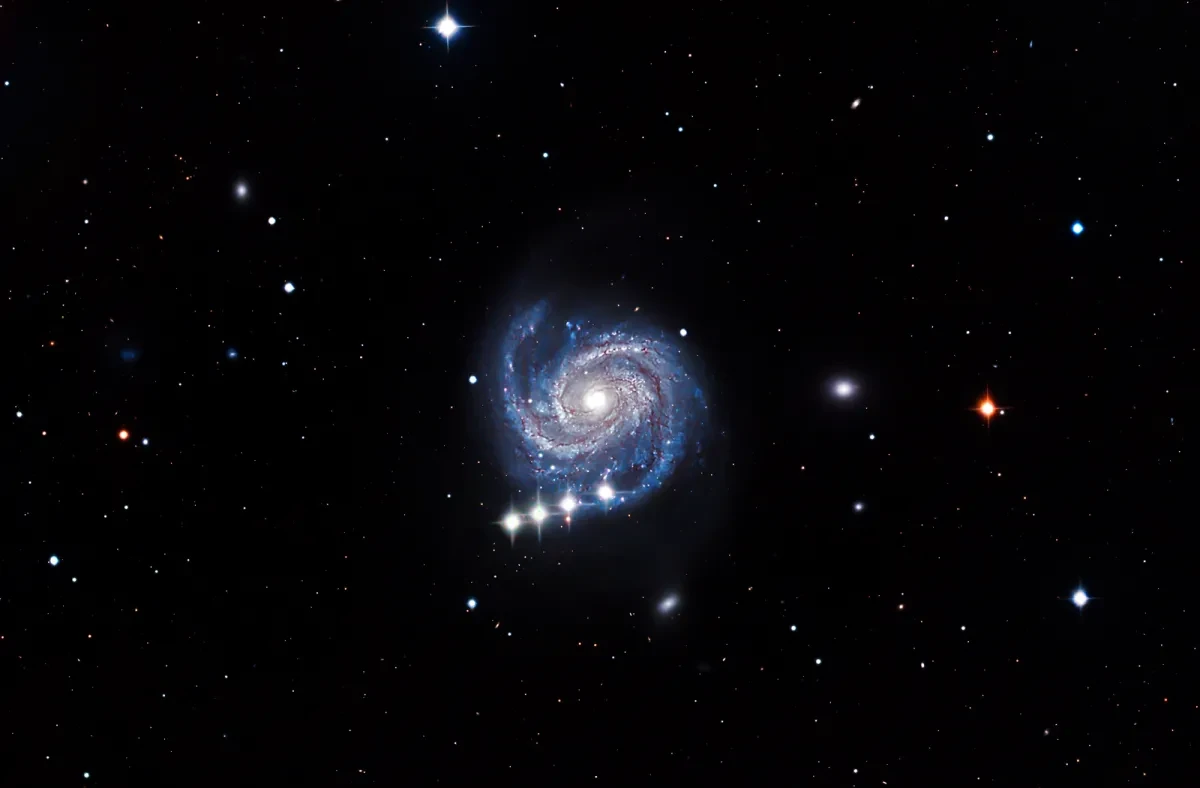
M100 (The Blowdryer Galaxy) and Ceres by Damon Mitchell Scotting
This image, shortlisted in Astronomy Photographer of the Year 2024, depicts Ceres passing in front of the galaxy M100.
Photographer Damon says, "On this rare and wonderful occasion, I was able to capture a dwarf planet, more than a billion times smaller than its galactic counterpart, transit beyond the galaxy’s spiralling arms. Ceres shines brighter than the galaxy and zips across our night sky at an alarming pace. I captured multiple long exposures over an eight-hour period to showcase the beauty of the Blowdryer Galaxy and the relatively quick speed of Ceres."
See the world's greatest space photography at Astronomy Photographer of the Year.
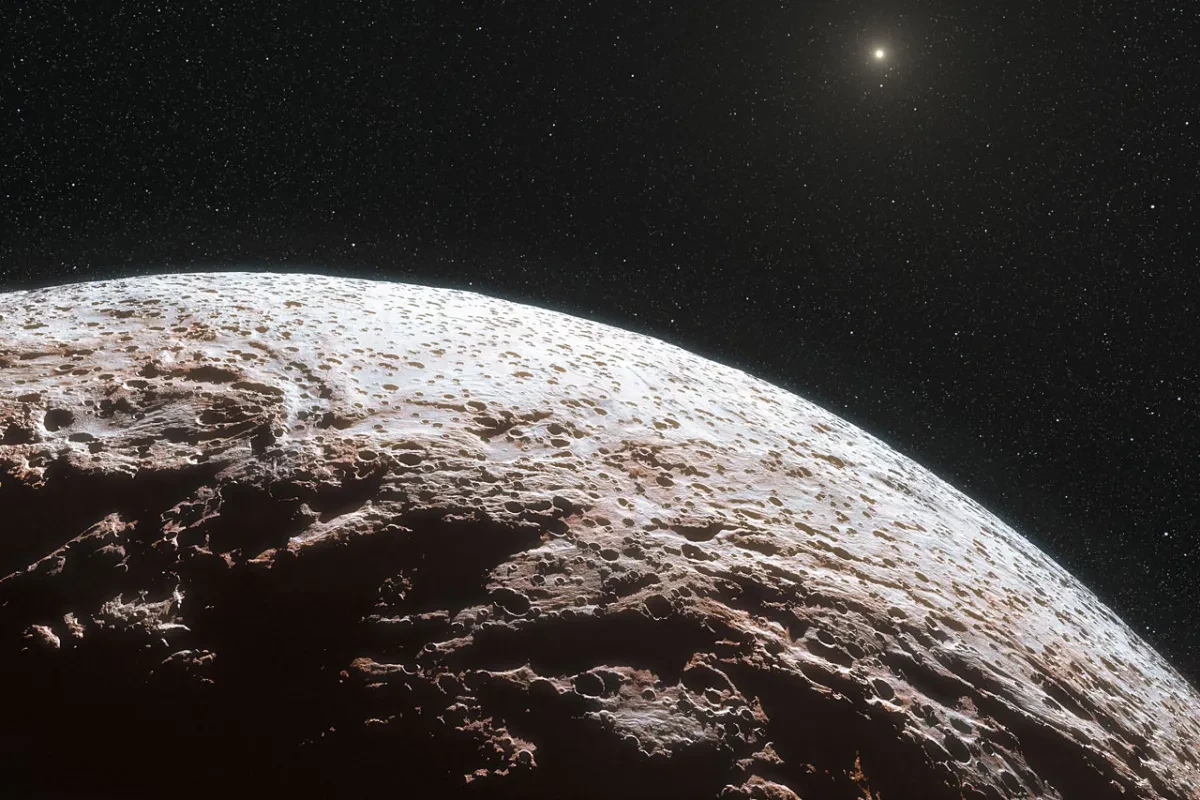
Makemake
Makemake (pronounced Mak-ee-Mak-ee) was discovered at a similar time to Eris back in 2005.
Due to the time of year it was found, it was codenamed ‘Easterbunny’ before being given its official name, which comes from the Rapa Nui god of fertility.
Makemake is 1,430 km in diameter and has one known moon, provisionally named MK2.
One year on Makemake is 305 Earth years, while a day is 22.5 hours long.




